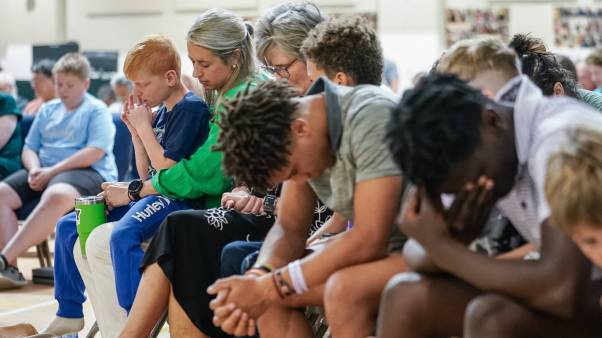In this series
Spot the seven
Hans Memling (ca. 1435 -1494) was a Flemish master painter who studied under Rogier van der Weyden (pp. 22-23). His “Seven Joys of the Virgin” depicts a series of Marian moments drawn (like the Rosary; see p. 30) from medieval devotions to Mary.
Her seven joys are the Annunciation, the Nativity, the Adoration of the Magi, the Resurrected Christ’s appearance to Mary, Christ’s Ascension, Pentecost, and Mary’s own (as tradition had it) bodily Assumption into heaven.
Free will’s shining moment
Jaroslav Pelikan reminds us that the Annunciation to Mary can be seen as God’s ultimate validation of free will. Mary’s obedience to the angel’s message “was no less voluntary in its affirmation than the disobedience of Eve had been in its negation.” (Mary Through the Centuries, p. 87)
O holy night
As have Protestants since his day, Martin Luther affirmed the Ephesus Council’s formula that stated Mary was truly the “mother of God”: “God did not derive his divinity from Mary; but it does not follow that it is therefore wrong to say that God was born of Mary. … She is the true mother of God. … Mary suckled God, rocked God to sleep, prepared broth and soup for God, etc.” (On the Councils and the Church, 1539)
The Magi and the Mama
Christian literature’s most ancient hymn to Mary, the so-called “Akathist” hymn (late 5th or early 6th century), makes Mary one focus of the Magi’s praise: “The children of the Chaldees seeing in the Virgin’s hands him whose hands made men, and knowing him as Lord … cried out to her who is blessed: Hail! Mother of the unsetting Star. Hail! Splendor of the Mystic Day. …”
Snatching life from death
Peter Chrysologus (ca. 380-ca. 450), bishop of Ravenna and defender of the Ephesus Council’s Theotokos formulation, identified “the other Mary” who accompanies Mary Magdalene at the tomb as the mother of the Lord. Then he portrayed the Virgin Mary as the second Eve, come now in the fullness of time to meet the resurrected Christ and undo the disobedience of the first Eve: “She who had taken perfidy away from paradise hurries to take faith from the tomb; she, who had snatched death from the hands of life, hastens to snatch life from the hands of death.”
Birth of an assumption
While Scripture reveals nothing about Mary’s death, tradition soon filled in the blank. Most influentially, John Damascene (d. 749) reported a story reportedly told at the Council of Chalcedon (451) that Mary had died in the presence of the Apostles, but when they opened her tomb they found it empty, “wherefrom the Apostles concluded that the body was taken up to heaven.” From this root developed a widespread belief that Mary was assumed bodily and now tastes the Resurrection for which Christians hope.
Copyright © 2004 by the author or Christianity Today/Christian History & Biography magazine. Click here for reprint information on Christian History & Biography.












